Aloe vera is a popular succulent loved for its thick fleshy leaves. However, one common problem that plant owners complain about is their aloe leaves growing thin. What makes the aloe leaves thin? Let’s find out.
Incorrect watering, poor lighting conditions, and a small pot are the reasons that can make your aloe leaves go thin. When the plant doesn’t receive enough nutrients and water to grow, the leaves droop and become thin. Providing appropriate care can help prevent thin leaves.
If you want to make your aloe leaves fleshy and healthy again, you must identify the exact problem and try to fix it as soon as possible.
In this article, I will explain all the possible reasons that can lead to thin leaves on the aloe vera plant and how you can fix them. So, keep reading.
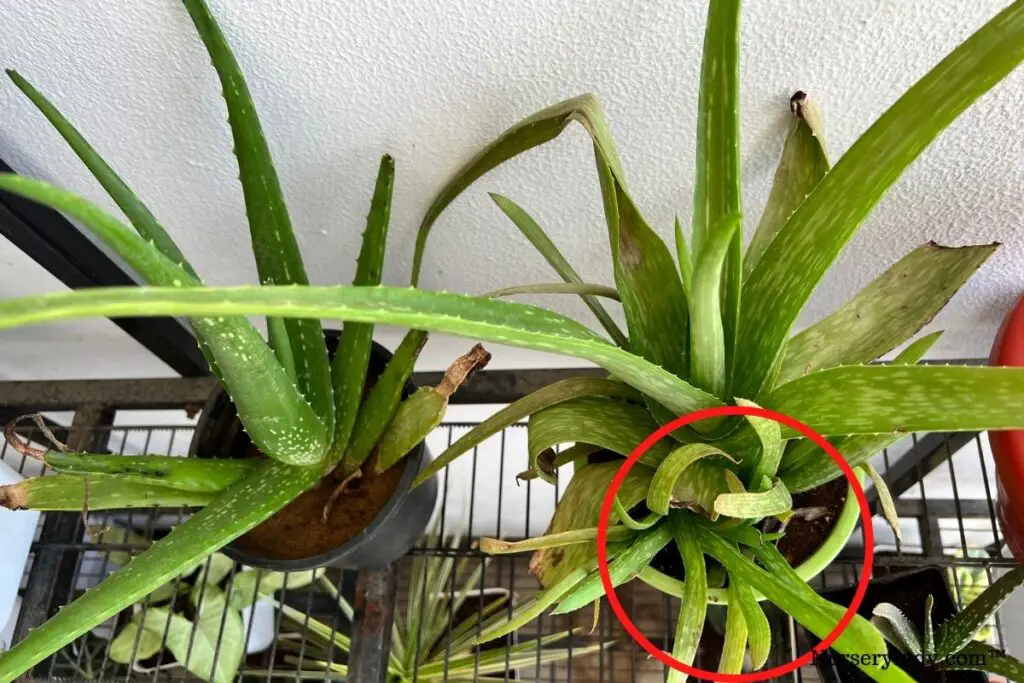
Why are my aloe leaves so skinny?
There can be one or more reasons behind thin leaves on the Aloe vera plant.
The leaves fail to remain healthy if you don’t take proper care or keep the succulent in unfavorable conditions.
Let’s look at all the reasons that make the aloe vera leaves thin.
- Lack of water
- Overwatering
- Too small pot
- Low light
- Too much light
- Cold weather
- Aloe mite infestation
- Overfertilization
- Wrong potting mix
I will explain these in detail, along with their fixations.
Lack of water
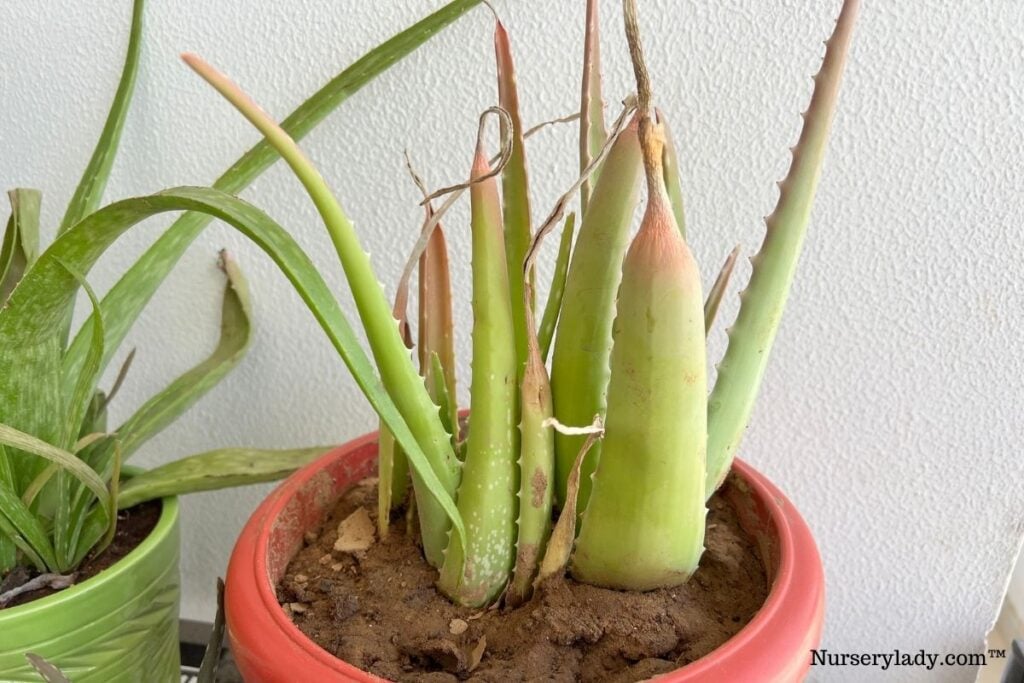
Aloe vera doesn’t require a lot of water like most other plants but not giving it any water will cause problems like thin leaves.
Being a succulent, aloe vera is habituated to growing in dry conditions.
To survive the dry spells, aloe vera stores water in its leaves that it uses during the dry periods.
However, if you don’t give it water for too long, it will use up all the water stored in the leaves.
Thus, the leaves will become thin due to a lack of water.
This condition can occur even when you are watering your aloe vera correctly.
The reasons can be:
- A small pot.
- The soil doesn’t retain moisture.
- Exposure to excess heat or light
How to revive an underwatered aloe vera?
- If your aloe leaves are getting thin due to lack of water, start by giving it a good soak.
- Water your aloe vera close to the soil so the water can reach the roots.
- Water thoroughly until the excess water starts running out of the drainage holes.
- Use soil that can retain the required moisture.
Also read: How To Water Aloe Vera Plant? (How often, Summer, Winter)
Overwatering
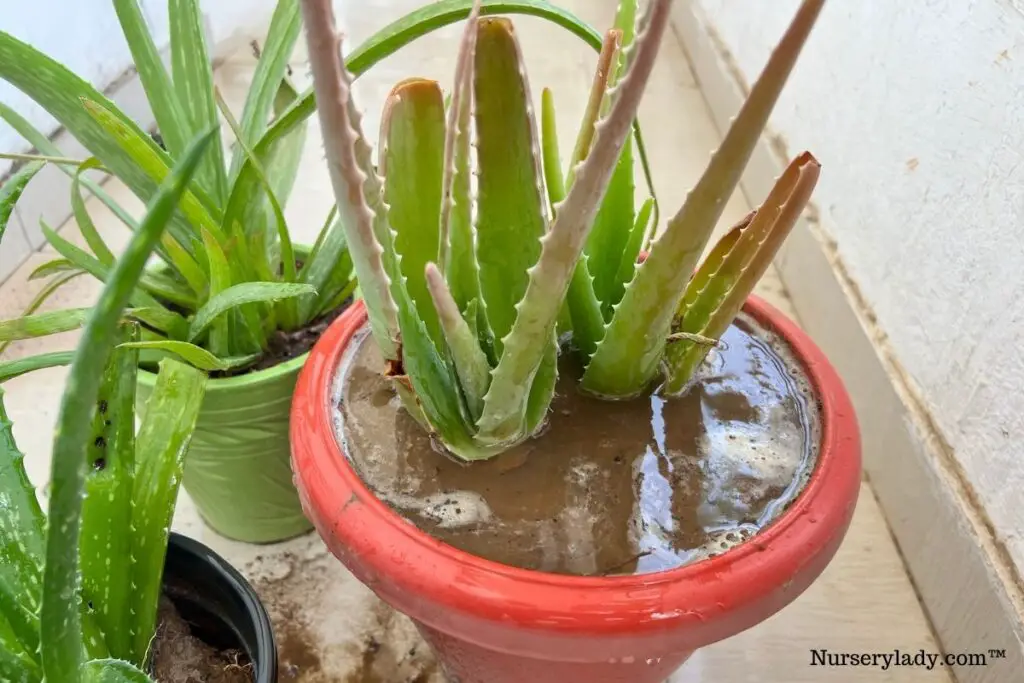
Aloe vera comes from the desert regions where it thrives in dry conditions.
Due to this, it doesn’t enjoy moist conditions, and it is sensitive to overwatering.
When you overwater the aloe vera, the roots get affected and fail to absorb water or nutrients.
The plant becomes weak, uses up the stored moisture in the leaves, and makes the leaves go thin.
Your aloe vera might be getting overwatered due to the following reasons:
- A poor drainage system
- Frequent watering
- Excess watering during dormancy
How to fix an overwatered aloe vera?
- The very first thing to do is stop watering.
- Provide sufficient light so the soil can dry up fast.
- If you suspect root rot, dig up the aloe vera or take it out of the container and inspect the roots. If the roots are affected, they will look mushy and brown.
- You must prune the affected roots, spray a fungicide on the healthy ones, and plant the aloe vera in a dry spot or a new container with a fresh potting mix.
- Always let the soil dry out before watering the aloe vera again.
- Use the correct sized pot with drainage holes.
- Use a succulent mix that can drain the excess water.
Looking for gardening supplies? We have tested 100's of products before recommending them to you guys. Check out our best pick below:
| Image | Gardening Supplies | Best Price? |
|---|---|---|
 Top
Top Top
Top | Raised Garden Bed Kit | Check On Amazon |
 | XLUX Soil Moisture Meter, Plant Water Monitor, Soil Hygrometer Sensor for Gardening, Farming, Indoor and Outdoor Plants, No Batteries Required | No Results |
 Top
Top Top
Top | 82 Pcs Garden Tools Set and Extra Succulent Tools Set | Check On Amazon |
 | Joeys Garden Expandable Garden Hose with 8 Function Hose Nozzle, Lightweight Anti-Kink Flexible Garden Hoses, Extra Strength Fabric with Double Latex Core, (50 FT, Black) | No Results |
 Top
Top Top
Top | Dual Chamber Compost Tumbler | Check On Amazon |
 Top
Top Top
Top | Sunnyglade Plant Stakes | Check On Amazon |
 Top
Top Top
Top | Organic Cold Pressed Neem Seed Oil | Check On Amazon |
 Top
Top Top
Top | Mighty Mint Gallon :-Insect and Pest Control Peppermint Oil | Check On Amazon |
 Top
Top Top
Top | Scotts DiseaseEx Lawn Fungicide | Check On Amazon |
 Top
Top Top
Top | Jacks Classic 20-20-20 All Purpose Fertilizer | Check On Amazon |
 Top
Top Top
Top | 30,000 Seeds Pollinator Attracting Wildflower Mixture | Check On Amazon |
 Top
Top Top
Top | Survival Vegetable Seeds Garden Kit-Over 16,000 Seeds | Check On Amazon |
Too small pot
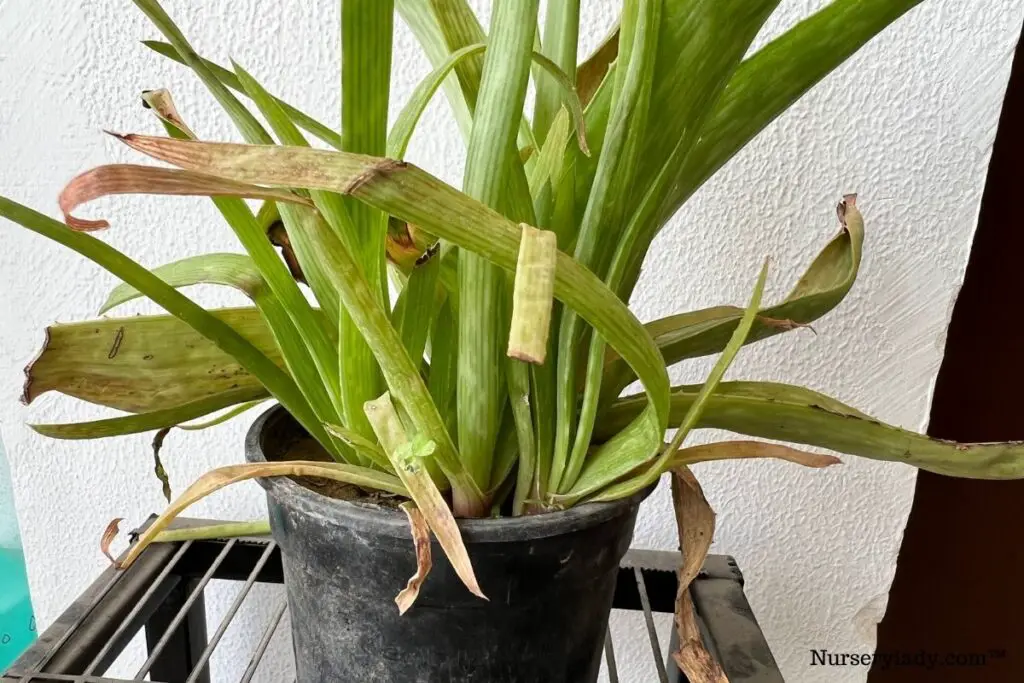
If you use a too-small pot for your aloe vera or outgrow its current pot, it will become rootbound.
An aloe vera will only enjoy being rootbound slightly, but a prolonged period of rootbound will make the plant unhealthy.
When you keep your aloe vera rootbound for a prolonged period, the roots start growing in a circular motion and displacing the soil.
When you water your aloe vera, the water runs out of the drainage holes immediately as the soil can’t absorb the water.
The plant gets dehydrated, lacks energy, and uses the leaves’ moisture, making them thin and lifeless.
How to fix a rootbound aloe vera?
If your aloe vera shows signs of being rootbound, such as an inflated pot, roots emerging out of the drainage holes, and the soil surface, you need to shift it to a bigger pot.
- Get a new pot 1-2 inches bigger than the previous one.
- Prepare a suitable potting mix or get a succulent mix.
- Take the aloe vera out of its pot and untangle its roots gently.
- Fill the pot halfway with soil.
- Place the aloe vera inside the pot.
- Add soil from all sides.
- Tap the sides of the pot to allow the soil to settle down.
Provide the ideal growing conditions, and you will soon notice the leaves bouncing back to health.
Also read: Does Aloe Vera Plant Like To Be Root Bound? (Possible Problems+Repot)
Low light

Aloe vera requires 5-6 hours of direct sunlight to remain healthy.
However, if it doesn’t get enough light and stays in a shaded part of the garden or a dark spot of the room, it will show signs of stress.
One sign that indicates that your aloe is not getting enough light is thin leaves.
Due to lack of light, the plant can’t photosynthesize properly, and therefore, the plant doesn’t get enough nutrients for growth and survival.
Your aloe vera becomes unhealthy, and therefore, the leaves become thin.
How to provide more light to aloe vera?
You can provide more light to your aloe vera in the following ways.
- Use artificial lights if your house doesn’t get enough natural light.
- Plant your aloe vera in an open space in the garden that isn’t blocked by any tall tree or building.
- Choose the correct direction while planting or placing aloe vera in the garden so it can get sufficient light. The south direction will be ideal.
- Place your aloe vera near a bright sunny window where it will get the required direct sunlight.
Also read: What Kind Of Light For Aloe Vera Plants? (Full sun, Shade, Or Partial Light?)
Too much light
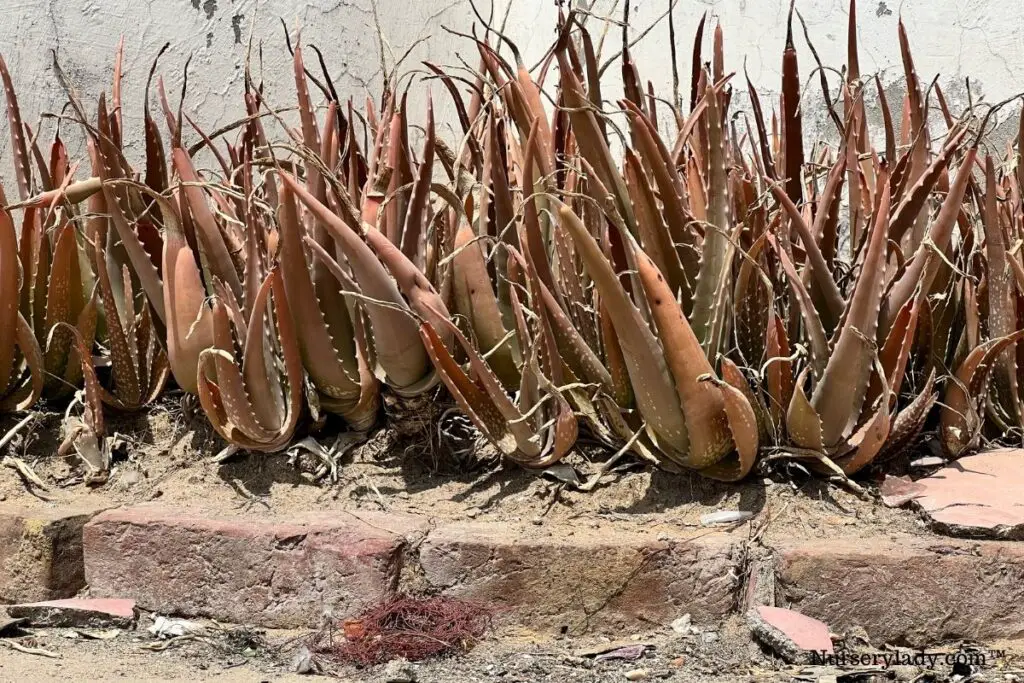
Although aloe vera requires 5-6 hours of direct sunlight, it also needs some shade that will protect it from the direct sunlight of the afternoons.
If the plant doesn’t get enough shade and gets exposed to the sun’s scorching rays, the plant can get sunburned.
Sunburn is a matter of concern as it stops the plant gets dehydrated, and the leaves become thin due to lack of moisture.
How to treat a sunburned aloe vera?
For potted aloe vera:
- Move the plant to a less bright location.
- Prune the affected leaves.
- Water the plant thoroughly to hydrate it.
- Put on curtains on the window to protect your aloe vera from the direct sunlight during the intense hours of the day.
For in-ground aloe vera:
- Dig up the plant from its current spot and plant it in a location where it will stay protected from the sun’s harsh rays.
- Remove the damaged leaves and water the plant.
- If you want to grow it in the same spot, fix a shading net on it whenever the sunlight gets too intense.
Cold weather
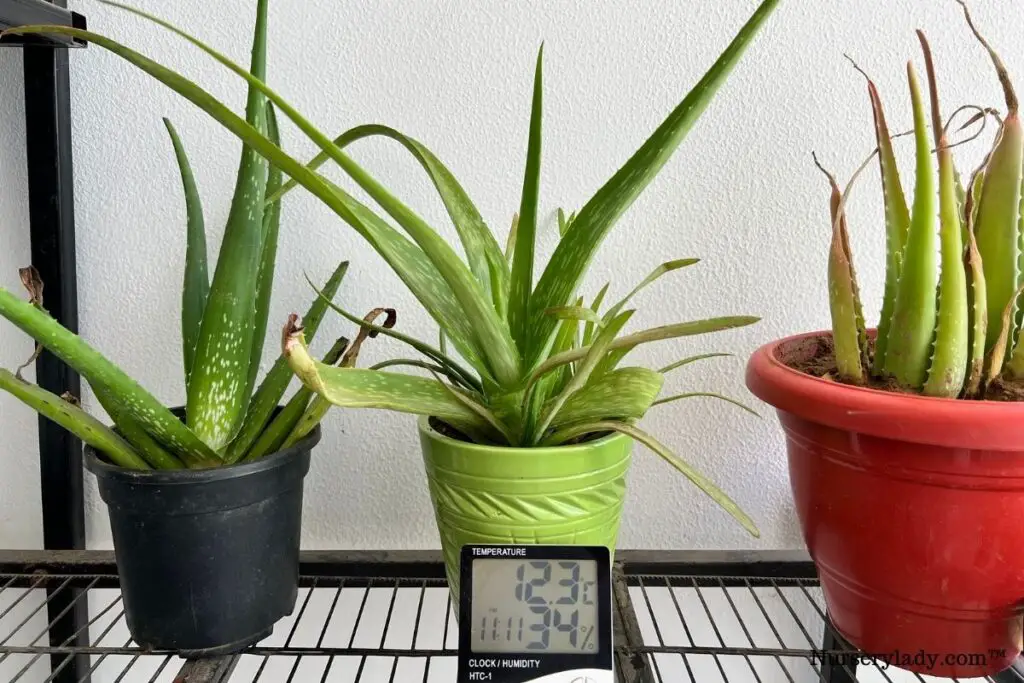
Aloe veras are succulents built to grow in dry conditions of the deserts.
They thrive in warm conditions, and winter is not the ideal time for these plants.
During winter, the temperatures drop lower than the aloe vera’s preference, and if the plant gets exposed to it, you will notice its effects.
The leaves lose all moisture and shine and become thin and dull.
It might even die if you leave your aloe vera outside in winter.
How to save aloe vera from the cold weather?
- Before winter sets in, you should bring your outdoor aloe vera inside. You can dig up the in-ground aloe veras, store them in pots, and keep them inside throughout winter.
- You must keep the aloe vera away from frosty windows, doors, windows that are closed and opened frequently, and cold drafts.
- Keep the plant in a well-insulated room but don’t take it too close to any heating sources.
- Water the aloe vera even more sparingly and avoid fertilizing it in cold weather to avoid shocking it.
Also read: Can Aloe Vera Plants Survive Cold Weather? (+Deal With Cold Damage)
Aloe mite infestation
Aloe mites are pests that feed on succulents like aloe vera.
They get carried by the wind, insects, water, or other mediums to your aloe vera plant.
They are hard to notice and cause severe damage to your aloe vera.
The leaves become thin since the aloe mites feed on your aloe vera and suck out all the moisture and nutrients from its leaves.
How to remove aloe mites from the aloe vera?
- Relocate your aloe vera if there are other plants around it, as these bugs spread fast and can damage the other plants.
- Remove the affected and damaged parts by pruning them with a sharp and sterilized pruner.
- Apply insecticides to treat the infestation and kill the aloe mites.
- If the plant is heavily affected and infested, you must discard it as you can’t save it.
Overfertilization
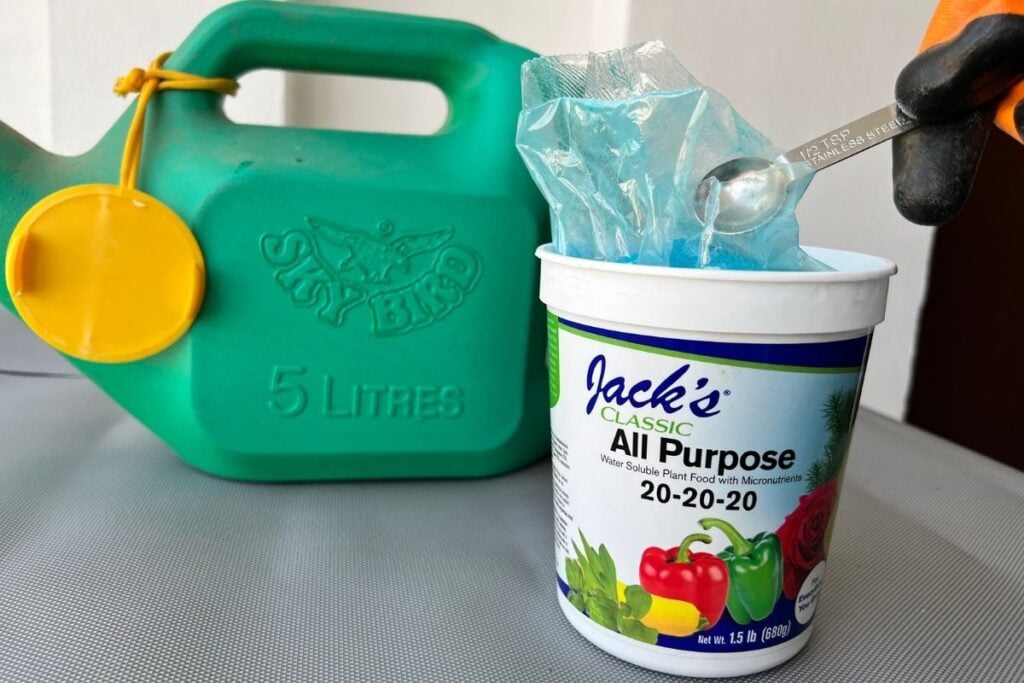
Aloe vera requires very little fertilizing.
An aloe vera plant can survive without fertilizers, but people fertilize it to boost its growth.
Aloe vera is used to grow in soil that doesn’t contain many nutrients so it can survive without fertilizer but what causes all the problems is when you overfertilize it.
If you fertilize your aloe vera without understanding its requirements, you might fertilize it too frequently.
This can burn the roots and damage the plant.
The leaves will lose their plumpness and become thin.
How to save an overfertilized aloe vera?
- If your aloe vera is overfertilized, you should take the pot to the sink and run water on the soil to flush out the excess salt. Do this 3 to 4 times.
- Fertilize your aloe vera once or twice a year.
- Avoid fertilizing when the aloe vera is dormant or during the winter season.
Also read: Does Aloe Vera Need Fertilizer? (How Much, How Often+Best Pick)
Wrong soil mix
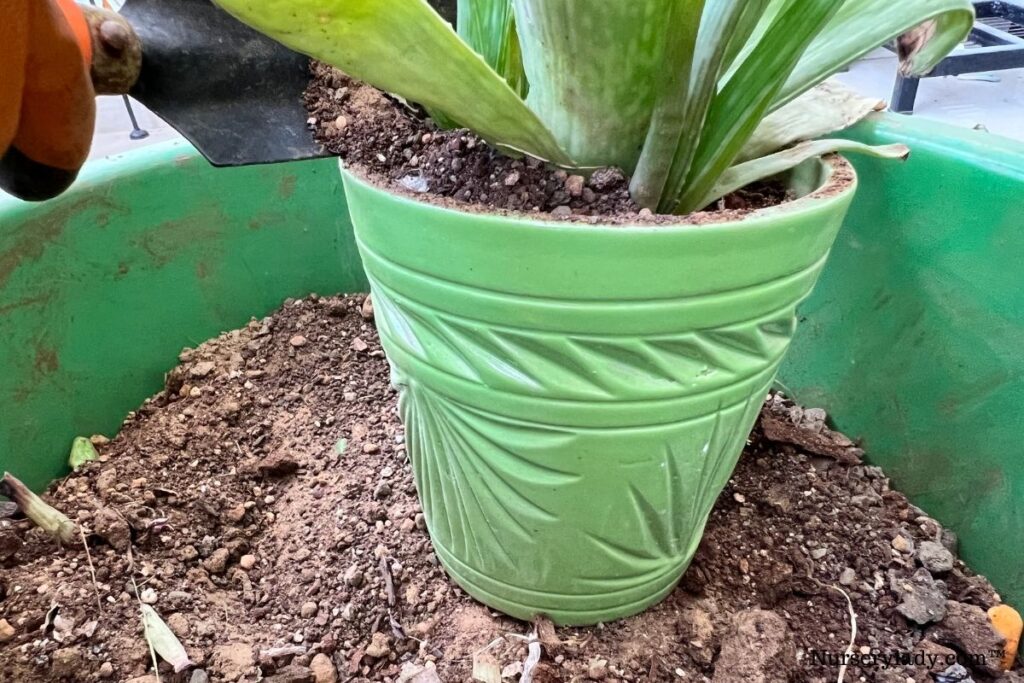
Using the wrong soil mix for your aloe vera will either hold excess water or drain water too fast.
I already explained the effects of overwatering and underwatering on your aloe vera earlier, and you know these are responsible for the thin leaves on your aloe vera.
Therefore, you need to use the right soil mix to avoid letting the leaves thin out.
What is the correct soil for aloe vera?
You can either use the readymade succulent or cactus mix available in the market or create one for your aloe vera.
An ideal soil for your aloe vera will be a mixture of:
You can mix these with a little water and plant your aloe vera in it.
Also read: What Type Of Soil For Aloe Vera Plant? (+Ideal Soil Mix)
How to prevent thin leaves on your aloe vera?
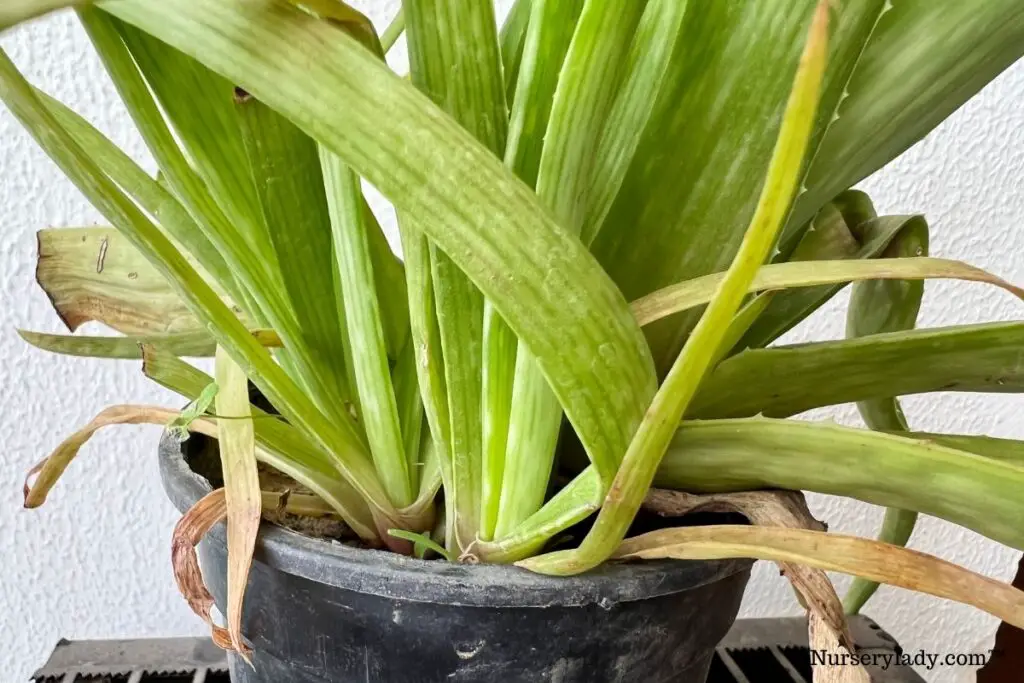
If you want to prevent thin leaves on your aloe vera, you must provide the right care and don’t let the above mistakes happen.
| Factor | Aloe Vera Care |
|---|---|
| Light | Provide 5-6 hours of direct sunlight and shade during the intense hours of the day. Use artificial lights if your house doesn’t get enough light. |
| Water | Water your aloe vera once in 2-3 weeks when the soil gets dry. Water it more sparingly in the dormant period. |
| Fertilizer | Fertilize your aloe vera only once or twice a year. Dilute the fertilizer to avoid overfertilization. Don’t fertilize during dormancy. |
| Soil | Use soil that gets well-drained and retains the required moisture to not your aloe vera get thirsty too soon. Commercial succulent mixes are a good option for these plants. |
| Repotting | Repot your Aloe vera whenever it shows signs of rootbound. Aloe veras don’t like staying rootbound too long as it causes many problems to the plant. |
| Temperature | Aloe veras require warm temperatures so avoid exposing them to low temperatures, cold drafts, or frost during winter. Bring your outdoor aloe vera inside if you want to help it survive the harsh conditions. |
| Pest infestation | Aloe veras can become the food for pests like aloe mites that severely damage these plants. Keep an eye on the plant and spray a neem oil solution on it to prevent pests. |
Reference: NCBI, New York Botanical Garden, University of New Hampshire, University of Florida, Wikipedia.

Thanks for sharing. I read many of your blog posts, cool, your blog is very good.